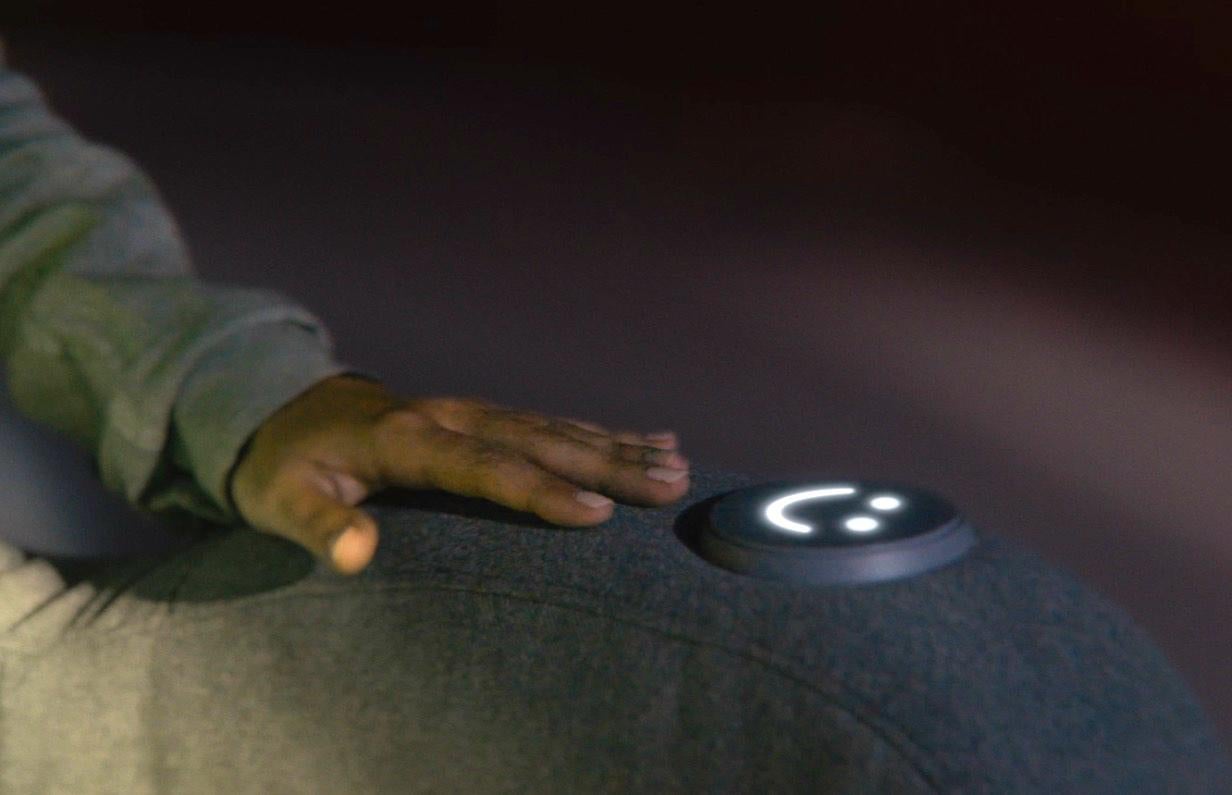Netflix's Black Mirror season 4 episode 6 'Black Museum' review: Episodes collide in chilling, racially-charged climax
By this point we are so far beyond simple 'device addiction'

Your support helps us to tell the story
From reproductive rights to climate change to Big Tech, The Independent is on the ground when the story is developing. Whether it's investigating the financials of Elon Musk's pro-Trump PAC or producing our latest documentary, 'The A Word', which shines a light on the American women fighting for reproductive rights, we know how important it is to parse out the facts from the messaging.
At such a critical moment in US history, we need reporters on the ground. Your donation allows us to keep sending journalists to speak to both sides of the story.
The Independent is trusted by Americans across the entire political spectrum. And unlike many other quality news outlets, we choose not to lock Americans out of our reporting and analysis with paywalls. We believe quality journalism should be available to everyone, paid for by those who can afford it.
Your support makes all the difference.*This review contains spoilers for Black Mirror season 4, which you can watch here.*
I assumed 'White Christmas' to contain Black Mirror's most hideous circumstance - being stuck in an empty digital simulation for years and years and years - but the new season's 'Black Museum' may have just topped it.
The show is good at making a futuristic world tangible and realistic. The episode's environment has an almost retro look, Letitia Wright's protagonist Nish pulling over her disheveled old car in the desert, and yet the solar charger she retrieves from the trunk lets you know we're in the near future. Apparently having a few hours to kill, she enters a nearby hard-up crime museum, where we're treated to not one but three exceedingly fucked up technologies.
The instantly creepy and unsettling owner and former experimental scientist, Rolo Haynes (Douglas Hodge) details the history of a neural net exhibit - a story that was actually adapted from one written by magician Penn Jilette. Gripping and hard to watch in places, the tale - which we're encouraged to question thanks to skepticism from Nish - centres on a doctor he once gave the opportunity to feel patients' pain but without the physical consequences in order to better diagnose their malady. Dr. Dawson soon developed essentially algolagnia, a sexual attraction to the pain, and, after alienating his girlfriend with his desire to feel her pain via the neural net in the bedroom, took to "whittling away" his own body just for a fix of agony. The images of his self-mutilated face and body are horrifying, and when these actions were no longer enough - containing no element of fear - he kidnapped a homeless man, fitted him with the net, and tortured him, a hit Haynes likens to a "speedball" for the doctor. Only Black Mirror could temper this heinous scene with a boner joke.
Next up on the tour is a toy monkey that contains an exact digital copy of a woman who was previously in a coma. Transferred there by Haynes after her boyfriend couldn't stand having her implanted in his own brain, she is motionless, abandoned and only able to communicate with the binary response options of a toy. And yet even this isn't the bleakest-yet existence I was talking about at the start.
Reaching the "main attraction", we find a twisted combination of the previous two artifacts - a digitally uploaded former death row inmate who can be electrocuted again and again by paying customers. As visitors dwindled due to human rights protests, we learn the inmate - a black man - was shocked increasingly brutally by deep-pocketed white supremacists. We are in deepest, darkest Black Mirror territory here, reminiscent of 2017's breakthrough indie film Get Out.
In a twist, Nish reveals herself to not be a British traveller but the American daughter of the imprisoned and tortured man, transferring Haynes to the chamber in an act of revenge. Given the chair, Haynes is then computed to a "souvenir" function he previously had installed, where an exact copy of himself in a keychain can be viewed in a constant state of electrocution, screaming maniacally from the pendant forevermor; forever in absolute agony. This is not an episode to watch right before bed.
Along the way we saw Black Mirror episodes collide, 'White Bear's protagonist being seen on a screen and Haynes having worked at St. Juniper's hospital, which we're to assume lent its name to San Junipero, the "uploading old people to the cloud" technology seen in the beloved episode of the same name. I'm not always a huge fan of the universes colliding trend, but here it all fits together quite nicely, creating a chronology of the technological brutality we've seen over the seasons.
Weaving together three engrossing narratives, 'Black Museum' is a very strong episode and will stick around in the psyche for some time. In spite of all the horror, it does end on a sort-of happy note, however, Nish riding off into the sunset. As we learn that her mother was able to witness the revenge through her being installed in Nish's brain, however, this presented a prime opportunity for one last hint of cynicism, and I only wish the mother's praise for her daughter's actions had been followed up with a criticism of some slight detail - the song on the stereo or her choice of hairstyle - a reminder that there is truly no happy ending for this type of human hybridisation.
Join our commenting forum
Join thought-provoking conversations, follow other Independent readers and see their replies
Comments